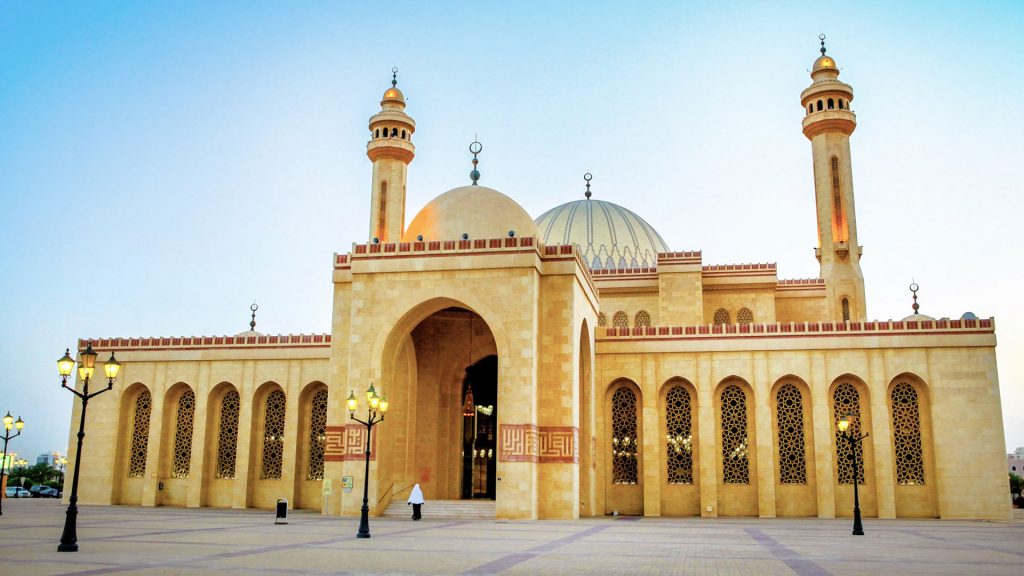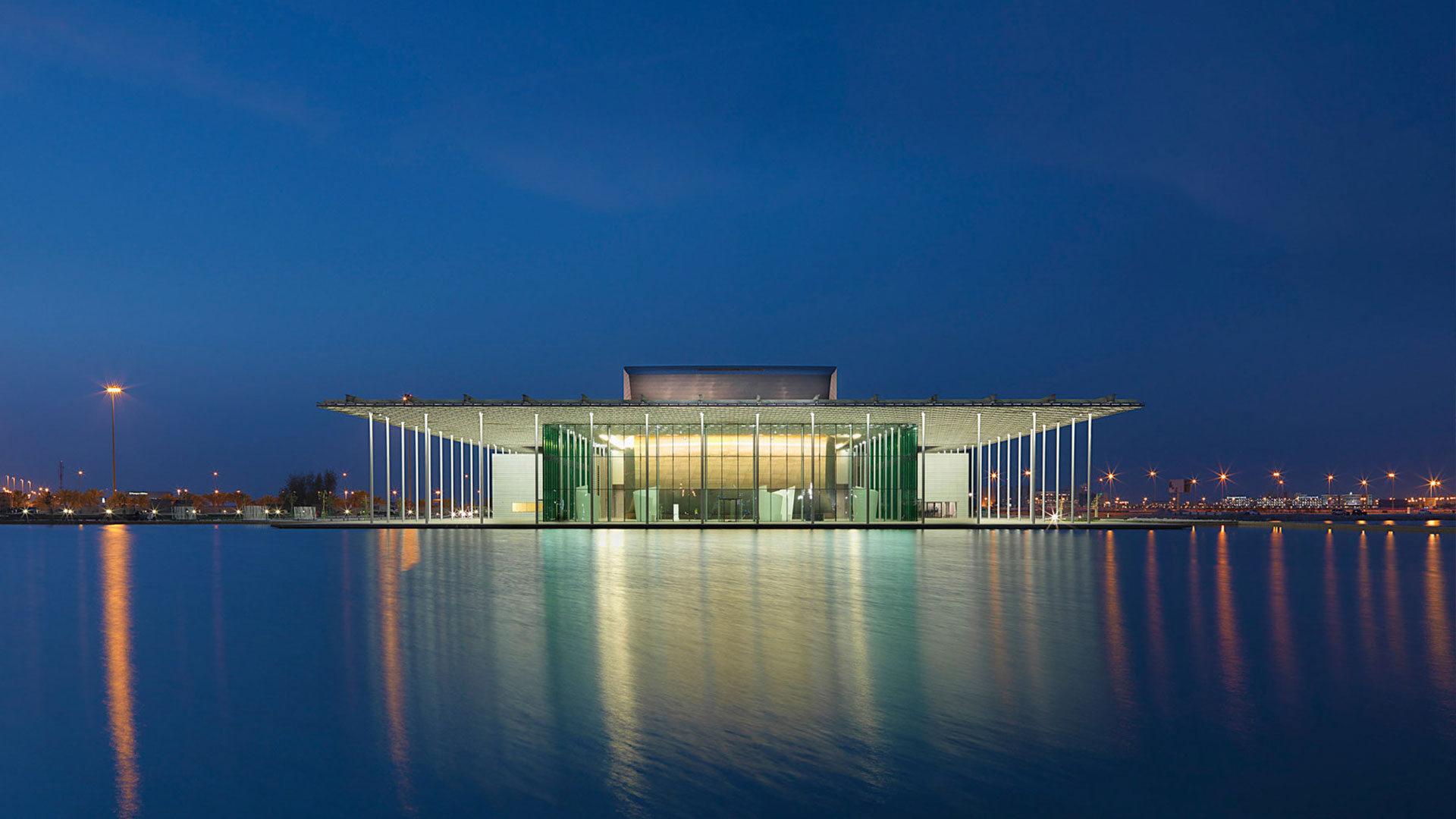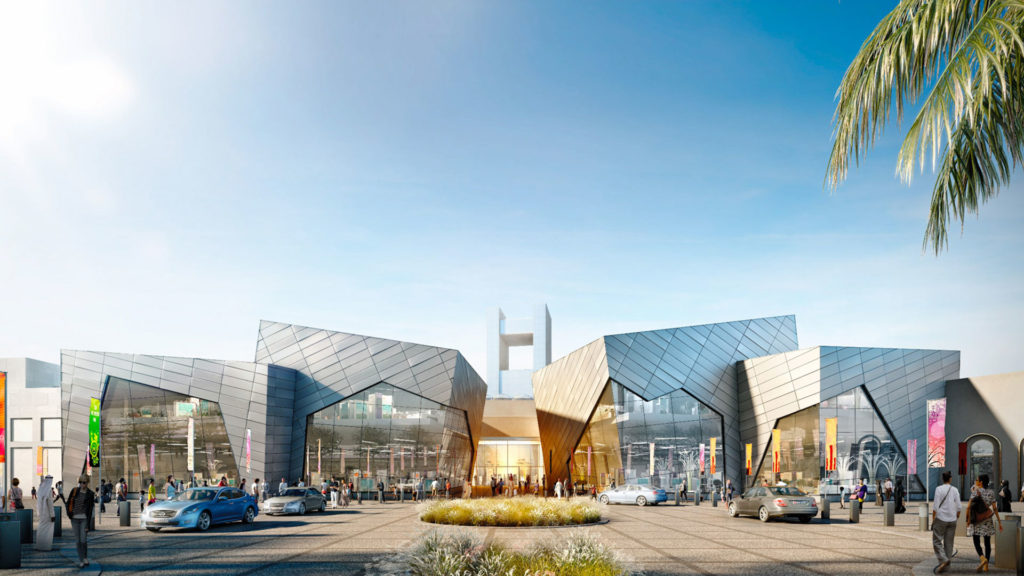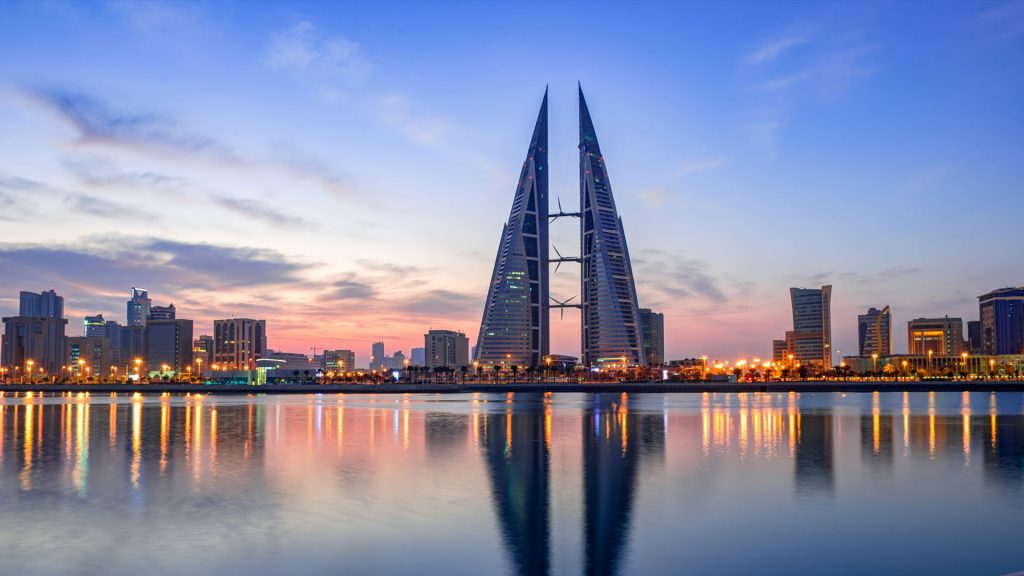Package Code
Historical Tour of the Paradise of the Persian Gulf
Historical Tour of the Paradise of the Persian Gulf
Tour Duration
Type Of Tour
Pickup Point
Vehicle
Chaffeur Details
Departure Time
Refreshments
Tour Guide
Optional

BAIT AL QURAN
Showcases a fascinating collection of Quranic manuscripts as well as a library of over 50,000 books written in Arabic, English, and French that focus mostly on Islam. There are manuscripts dating back to the 7th century as well. It is claimed to be the only institute in the world devoted to the holy Quran.

AL FATEH GRAND MOSQUE(Closed on Friday; Photo stop only)
Bahrain’s largest place of worship and one of the largest mosques in the world. The mosque accommodates up to 7000 worshippers and is crowned with the largest fiberglass dome in the world. The walls of the mosque are beautifully ornamented with Kufic calligraphy.

NATIONAL MUSEUM(Closed on Thursday)
The crowning achievement of the Kingdom of Bahrain’s ongoing efforts to preserve the nation’s heritage and history. The museum houses 9 main halls and classifies the accumulated heritage of the Kingdom of Bahrain into 6 different sections. Visitors to the museum will be taken on a 4,000- year journey through time as they pass through its halls, from the traditional handicrafts hall to the customs and traditions hall, burial mounds hall, ancient documents and manuscripts hall, Tylos hall, and Islamic period hall.

KING FAHD CAUSEWAY
One of the most expensive bridges in the world which connects Bahrain to Saudi Arabia.

BAHRAIN FORT
Qal’at Al-Bahrain is one the most significant historical and heritage sites in the Kingdom The site embodies several important phases in the Kingdom’s history, from 2,300 B.C. up to the 16th century A.D and is listed as a UNESCO World Heritage site.

CAMEL FARM
Providing a unique insight into a treasured element of Bahraini culture, the farm is home to over 500 camels of all ages and sizes. Before the introduction of cars to the country, camels were the primary means of transport for the people of Bahrain, as they are ideal to travel distances in the humid and dry climate. Have your cameras ready to catch some memorable moments with The Ship of the Desert.

BAB AL BAHRAIN
The name Bab Al Bahrain means Gateway of Bahrain. Constructed during the 1940s by the British, this monument is located at the entrance to the Manama Souq in Bahrain’s capital city Manama.

MANAMA SOUQ
This souq, situated behind Bab Al Bahrain has scores of shops offering a wide range of goods from textiles, spices, incense, perfumes, handicrafts, and souvenirs, as well as more modern products from all over the world. There are also a number of traditional coffee shops inside the souq.

ARAD FORT
A defensive fort in Bahrain reflecting ancient military architecture dating back to the 15th and 16th centuries. This fort is illuminated at night and hosts seasonal festivals throughout the year.

BURIAL MOUNDS
Amongst Bahrain’s mysterious ancient remains are the thousands of burial mounds that dominate the landscape north of the Island. Spanning the Dilmun era (3rd to 1st millennium BC) to the Tylos era (200 BC to 300 AD) the burial mounds are unique in terms of sheer number and concentration. The best preserved and most impressive mounds are the royal burial mounds in the village of A’ali.
- Bait Al Quran
- Al Fateh Grand Mosque
- National Museum
- King Fahd Causeway
- Bahrain Fort
- Royal Camel Farm
- Bab Al Bahrain
- Manama Souq
- Arad Fort
- A’ali Burial Mounds
- ITINERARY DETAILS

BAIT AL QURAN
Showcases a fascinating collection of Quranic manuscripts as well as a library of over 50,000 books written in Arabic, English, and French that focus mostly on Islam. There are manuscripts dating back to the 7th century as well. It is claimed to be the only institute in the world devoted to the holy Quran.

AL FATEH GRAND MOSQUE(Closed on Friday; Photo stop only)
Bahrain’s largest place of worship and one of the largest mosques in the world. The mosque accommodates up to 7000 worshippers and is crowned with the largest fiberglass dome in the world. The walls of the mosque are beautifully ornamented with Kufic calligraphy.

NATIONAL MUSEUM(Closed on Thursday)
The crowning achievement of the Kingdom of Bahrain’s ongoing efforts to preserve the nation’s heritage and history. The museum houses 9 main halls and classifies the accumulated heritage of the Kingdom of Bahrain into 6 different sections. Visitors to the museum will be taken on a 4,000- year journey through time as they pass through its halls, from the traditional handicrafts hall to the customs and traditions hall, burial mounds hall, ancient documents and manuscripts hall, Tylos hall, and Islamic period hall.

KING FAHD CAUSEWAY
One of the most expensive bridges in the world which connects Bahrain to Saudi Arabia.

BAHRAIN FORT
Qal’at Al-Bahrain is one the most significant historical and heritage sites in the Kingdom The site embodies several important phases in the Kingdom’s history, from 2,300 B.C. up to the 16th century A.D and is listed as a UNESCO World Heritage site.

CAMEL FARM
Providing a unique insight into a treasured element of Bahraini culture, the farm is home to over 500 camels of all ages and sizes. Before the introduction of cars to the country, camels were the primary means of transport for the people of Bahrain, as they are ideal to travel distances in the humid and dry climate. Have your cameras ready to catch some memorable moments with The Ship of the Desert.

BAB AL BAHRAIN
The name Bab Al Bahrain means Gateway of Bahrain. Constructed during the 1940s by the British, this monument is located at the entrance to the Manama Souq in Bahrain’s capital city Manama.

MANAMA SOUQ
This souq, situated behind Bab Al Bahrain has scores of shops offering a wide range of goods from textiles, spices, incense, perfumes, handicrafts, and souvenirs, as well as more modern products from all over the world. There are also a number of traditional coffee shops inside the souq.

ARAD FORT
A defensive fort in Bahrain reflecting ancient military architecture dating back to the 15th and 16th centuries. This fort is illuminated at night and hosts seasonal festivals throughout the year.

BURIAL MOUNDS
Amongst Bahrain’s mysterious ancient remains are the thousands of burial mounds that dominate the landscape north of the Island. Spanning the Dilmun era (3rd to 1st millennium BC) to the Tylos era (200 BC to 300 AD) the burial mounds are unique in terms of sheer number and concentration. The best preserved and most impressive mounds are the royal burial mounds in the village of A’ali.
- GALLERY
- Bait Al Quran
- Al Fateh Grand Mosque
- National Museum
- King Fahd Causeway
- Bahrain Fort
- Royal Camel Farm
- Bab Al Bahrain
- Manama Souq
- Arad Fort
- A’ali Burial Mounds











